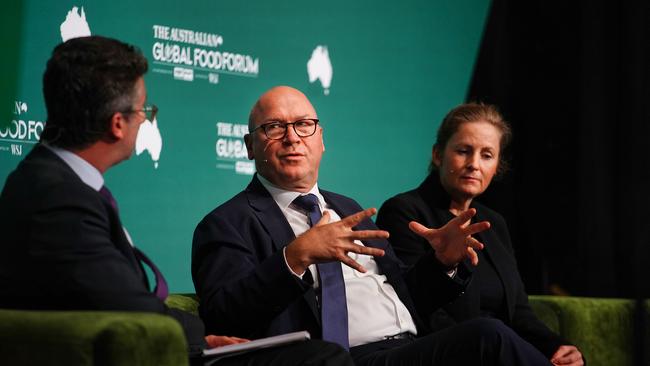If the Trump administration wants to jack up the prices Americans pay for food, so be it.

The first round of Trump tariffs on Australian exports, while a psychological shock coming from our most important ally, only affected steel and aluminium exports to the US, around a billion dollars’ worth or about 0.2 per cent of our total exports.
But come April our farmers could well be in Trump’s firing line. The US president has flagged another round of so-called reciprocal tariffs, which could affect our far more substantial agricultural exports to the US, which totalled almost $7 billion last financial year. The US has become the second-biggest export market for our farmers, among the most efficient producers in the world.
Once again, Australia would be unwise to retaliate given our dependence on Washington for defence, and the sheer economic futility of eye-for-an-eye trade policy.
Australia doesn’t have the luxury of a massive domestic market like the US, so we can’t impose tariffs in the knowledge that at least some of the cost will fall on foreign suppliers eager to maintain a foothold. If the Trump administration wants to jack up the prices Americans pay for food, so be it.

Australia would be highly exposed to an all-out global trade war, but we shouldn’t panic yet.
After all, Beijing informally banned our coal exports to China entirely from 2020, which until then had been worth more than $10 billion a year. Our miners managed to redirect what were hefty volumes to Japan and other markets. The ban later lifted and volumes bounced back quickly.
Our food exports are highly prized internationally, so a 10 per cent tariff shouldn’t cause too much angst domestically.
Indeed, our current bout of tariff anxiety might even have a few silver linings. It’s quite possible any next round of tariffs to be imposed on Australia by the US will be based on the willy argument that our 10 per cent GST is a de facto tariff.
Yes, the GST does increase the ultimate cost of imports from the US, but no, it doesn’t discriminate among nations. If the US links a general tariff on Australia to the rate of the GST that will be a powerful argument not to increase it, a call that periodically erupts in Australia given the disappointing reluctance in the Australian political class to cut costs.
Second, the tariffs might create a political opportunity for a future government to cut costs for Australian farmers, miners and manufacturers. The most obvious way would be to pare back green and red tape that significantly adds to production costs and therefore hobbles their ability to compete on the global stage.
The Albanese government sadly doesn’t appear to have learned that lesson, announcing another $750 million handout to steel manufacturers barely weeks after a multi-billion dollar bailout of the Whyalla steelworks.
Trump’s next round of tariffs will likely fall only weeks before the federal election due in May. There’s a political opportunity for the Coalition to walk back its commitment to ever more costly energy via the net zero target.
Adam Creighton is chief economist at the Institute of Public Affairs





So far, Australia has escaped Donald Trump’s tariff rampage relatively unscathed, but that could be about to change.